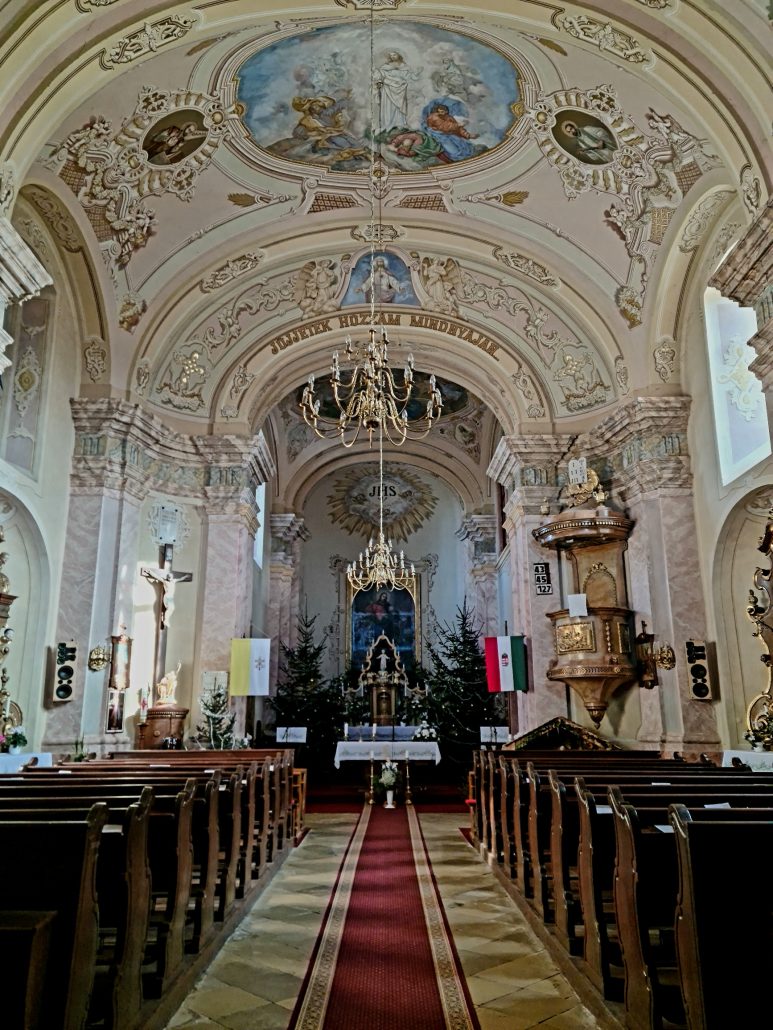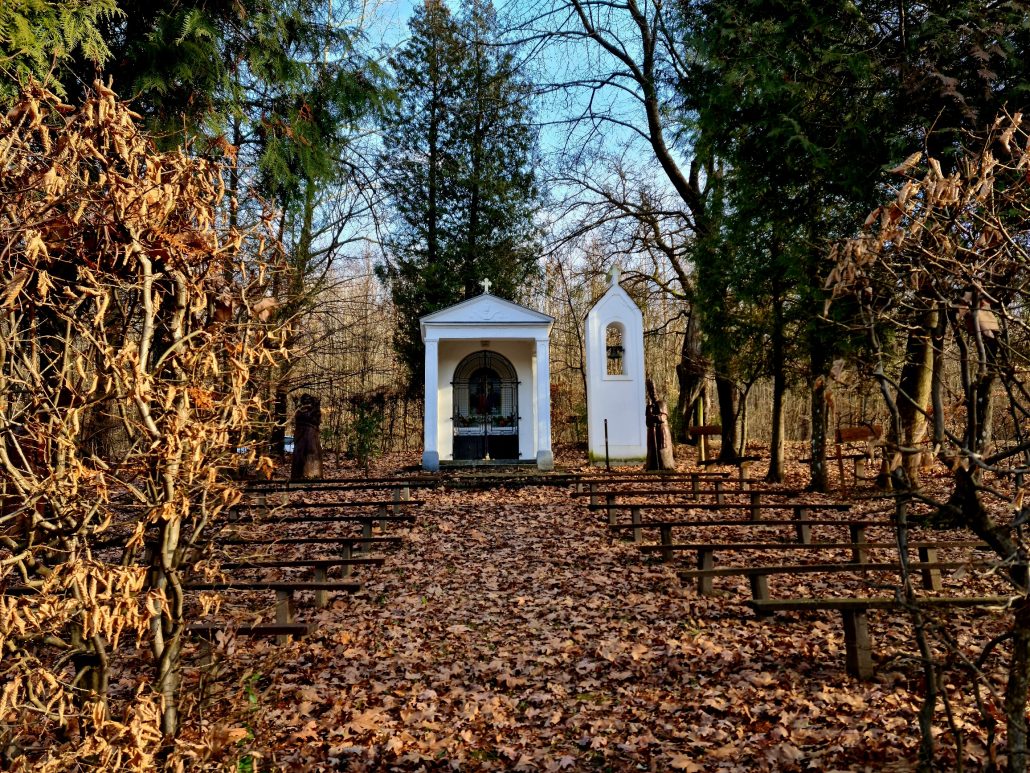Ah, the number of times we’ve driven through Nagykapornak on our way to and from the county seat of Zalaegerszeg. We’d spot the twin domes (is that what they’re called?) of what looked like a monastery and then on the outskirts a carved wooden sign pointing the way to the remote (hermitage). Each time, we’d make a note to stop next time. But next time, the note was rewritten. And the next time. And the next. Until this time, prompted by the inimitable MI, we decided to take the time to check both sites.
We were on our way home, so first came the monastery.
The Benedectine Abbey is on Via Benedictina, a route that connects historical Benedectine monasteries (active and repurposed) in Czechia, Poland, Slovakia, and Hungary, the Visegrad 4 countries. The project began in 2014 and is making steady progress.

Kapornak Abbey, although not as well known as its sister monastery in Pannonhalma, it dates back to the mid-1100s and was “the site of the first meeting Hungarian Benedictine Chapter (1217).”
In the 16th century the monastery was dissolved due to restructuring of the county system and also as a result of the Ottoman occupation of Hungary. During this time, the monastery was transformed into a stronghold. However, due to damages during the occupation, the abbey went out of use for a short time. Also used by the Franciscans and the Jesuits, today the abbey now functions as a Catholic Church. Visitors to Kapornak can view its still existing medieval architecture, as well as elements of typical Baroque style furnishings of the period.
The Abbey itself is a church but the monastery is now an old folks home. The sign on the church door, helpfully printed in three languages – Hungarian, German, and English – said to ask for the key at the home or check the mayor’s office. We chose the former. The lovely lady answered the doorbell took one look at us, and said, the magic word – kulcs – key. She opened both the outer and inner doors to the church and asked us to leave the keys on the pillar when we were done. Alls smiles and welcome.
How lovely to have the church to ourselves and what a magnificent church it is.
I grew up on a diet of Irish Catholic pictures and paintings without an inkling that my Catholic brethren in, say, Hungary, would have other ingredients entirely. I’ve amassed quite a collection of religious pictures and paintings that are commonplace here and yet so unfamiliar to me as to be positively exotic. By way of example, I don’t remember ever seeing a statue of St Rita in Ireland, but here, in Zala, I’m positively tripping over her.
In Kapornak, I saw two frescos that were a complete novelty for me; I could place neither the faces nor the scenes. And it was my first time seeing angels without bodies. Just a tad weird. Does anyone have any thoughts as to who or what these paintings depict? Jesus and Mary I get – it’s the four strange men I’m wondering about.

The detail in the paintings is exquisite and the greens and pinks of the marble with the copper and gold are a lovely touch. It’s obviously well cared for, which is lovely to see. And that the key is available makes it very accessible.




Further down the road, we came to the newly painted Remete sign pointing off to the right. Some 3.6 km up this narrow forest road sits an altar and a belfry with rows of wooden benches falling neatly below. It’s here, on the first Sunday after August 15, pilgrims come to celebrate the Feast of the Assumption.
The site dates to the Ottoman invasion, when the people of Nagykapornak and the surrounding villages fled to the forest to escape the invaders. Later, in the mid-seventeenth century, the Jesuits settled in the area, presumably taking over Kapornak Abbey.

The simple altar has a painting of Our Lady and somewhere in the vicinity is the Mária spring, presumably with healing properties.

The history of the belfry is attributed to Imre Makovecz. The paternal grandparents of the Kossuth Prize-winning architect lived in Nagykaporna, and he also spent his childhood summers there, so he carried the fate of the neighborhood close to his heart. The original bell was stolen in 2004 after eighty years of “service”. Imre Makovecz designed the new belfry, drew it and asked the locals to make it, he will arrange the bell. So it was. The new bell was consecrated in 2005 by Gyula Márfi, Archbishop of Veszprém.
The carved wooden calvary is a crude, yet beautiful depiction of the Stations of the Cross. It takes on an added beauty because of its location. The wood in the woods is simplicity at its best.


Dotted around the place are wooden statues, five in all. The one near the road is of a forester, complete with a shotgun and binoculars. He guards the place from the top. Another near the bottom is of the hermit who lived here who I think died in 1770. He guards it from the bottom. The other three sprinkled around the grounds are of St Paul, St Joseph, and Pope John Paul II.


Although one of a series of etched wooden signs seems to say that the hermit who lived here died in 1770, from what I read, a number of Jesuits from the Abbey lived and died in this forest, in this space.

The village of Nagykapornak had a population in 2004 of just under a thousand. Like so many of Hungary’s towns and villages, it has more to offer than might first appear. If you find yourself in the region of Zalaegerszeg, it’s worth a restorative detour.

Share this:
- Click to share on Twitter (Opens in new window)
- Click to share on Facebook (Opens in new window)
- Click to share on Pinterest (Opens in new window)
- Click to share on LinkedIn (Opens in new window)
- Click to share on Reddit (Opens in new window)
- Click to share on WhatsApp (Opens in new window)
- Click to share on Pocket (Opens in new window)
- Click to share on Telegram (Opens in new window)
- Click to email a link to a friend (Opens in new window)






